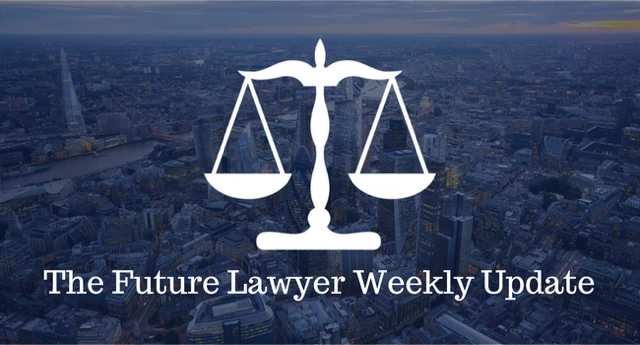
The Future Lawyer Weekly Briefing – W/C 1st July 2024
June 30, 2024
South Asian Heritage Month 2024: the Impact on Diversity and Inclusion
July 1, 2024
Article written by Olga Kyriakoudi
The Equality Act 2010 offers protection for nine distinct attributes, including but not limited to gender identity, religion, and belief. Recent cases law reveal that complications arise when two competing protected characteristics conflict in the workplace; for instance, the ‘philosophical belief with ‘gender identity’. It especially becomes complex when human rights are added to the mix, specifically the right to freedom of expression. Therefore, it is crucial to scrutinise recent legal cases, such as Denise Fahmy v Arts Council England (case no. 6000042/2022) and Jo Phoenix v The
Open University (case no. 3322700/2021 and 3323841/2021), to ascertain whether an equitable balance exists among these competing rights.
Following Maya Forstater v. CGD Europe (UKEAT/0105/20/JOJ), beliefs aligned with gender-critical perspectives, emphasising sex as inherent and unchangeable, are recognised as protected beliefs. Consequently, more claimants are winning cases arguing for legal protection of their anti-transgender beliefs.
In Denise Fahmy v Arts Council England (case no. 6000042/2022), the claimant participated in an internal Teams meeting discussing support for a charity. During the meeting, objections were raised by some employees who viewed the charity as transphobic. This led to the making of hostile comments towards individuals holding gender-critical beliefs. Subsequently, an email containing an ‘allied support sheet’ and a petition to disassociate from the charity was circulated. The decision acknowledged that expressing personal views during the Teams meeting was unwise, but was not harassment. In this context, balance is evident, as the court recognised that expressing views in defence of transgender individuals, including those of the respondent and others, did not constitute harassment. Furthermore, although Fahmy’s assertion of victimisation was rejected (South London Healthcare NHS Trust v Al-RubeyiEAT0269/09), one harassment allegation regarding the email containing the ‘allied support sheet’ and petition was upheld. This marks a step forward in achieving balance among competing protected characteristics, as the court acknowledged that controversial views held by claimants do not automatically imply discrimination against gender identity or warrant harassment.
Moreover, while existing literature may not address the current effects of the case, it does imply that Fahmy’s insights provide valuable guidance for workplaces aiming to mitigate future claims. For example, educating staff to ensure compliance with the Equality Act 2010.
However, as the court did not contest that the claimant’s gender critical belief qualifies for protection (s. 10 Equality Act 2010 and Forstater v. CGD Europe & Others 2022 ICR 1, EAT), and instead just accepted it, the case reinforced a problematic precedent: the Grainger criteria (Grainger plc v Nicholson [2010] IRLR 4). The Grainger criteria linked to Article 9 has stirred confusion in domestic cases, blurring the importance of a claimant’s expression of belief versus the belief itself. This confusion has led to contradictory statements in Employment Appeal Tribunal (EAT) decisions, initially emphasising the importance of manifestation (Gray v Mulberry Co (Design) Ltd [2019] ICR 175, 41), then acknowledging that the focus should be on the belief itself when determining if it is protected (Forstater v CGD Europe [2022] ICR 1, 77). Furthermore, while tribunals are urged ‘to not cheapen the significance of the words’; (Grant v HM Land Registry [2011] IRLR 748), they are also encouraged not to impose legal liability for every unfortunate phrase (Richmond Pharmacology v Dhaliwal [2009] IRLR 336). This inconsistency has evidently hindered the development of a coherent interpretation of section 10 of the Equality Act 2010.
Moreover, Fahmy acknowledged that courts do not have to assess the truth of beliefs but rather their merits against established legal standards. This raises concerns about maintaining cogency in legal proceedings if tribunals cannot evaluate belief validity (Patten, 2023). Without cogency, balancing rights becomes challenging, potentially
setting perilous precedents. Thus, until ‘philosophical belief’ is defined within statue, and the usage of Grainger criteria persists, varying interpretations of Section 10 may continue, leading to a misbalance in competing rights. However, had the outcome of this case been different, it could have established a troubling precedent allowing
discrimination based primarily on the expression of controversial views.
Similarly, in Phoenix (Jo Phoenix v The Open University (OA) (Case No: 3322700/2021 & 3323841/2021), the claimant was subject to harassment after voicing her gender critical views. The court ruled in favour of the claimant on at least seventeen grounds, against The OA. Thus, as Fahmy, this case reinforced a positive narrative for the equality law, that the very act of holding and manifesting these beliefs is not in itself harassment and can only be determined as such if it meets the statutory test.
In contrast to Fahmy, Phoenix examined the balance between freedom of expression and protected beliefs. The dispute arose when OA staff signed a letter calling for the removal of a research network set up by the claimant, citing offence to trans individuals. While OA argued for freedom of expression, the tribunal ruled that such expression has limits. It found the letter amounted to harassment, not academic freedom, as it aimed to tarnish the claimant’s reputation for opposing gender-critical beliefs. This ruling underscored the vital need to prevent the exploitation of freedom of expression to justify harassment, particularly when it is employed to penalise individuals for holding contentious beliefs.
While both cases reference Forstater as precedent, it is acknowledged that Forstater’s approach is tailored to specific circumstances (Cowan and Morris, 2022). Consequently, Mackereth (Mackereth v The Department of Work and Pensions Advanced Personnel Management Group (UK) Limited [2022] EAT 99) in application of Forstater, underscored potential for freedom of speech to yield to equality and diversity interests. Thankfully, Fahmy and Phoenix offered a departure from this trajectory by emphasising the importance of proportionality in adjudicating conflicting rights. The equilibrium achieved in Fahmy and Phoenix becomes particularly conspicuous when juxtaposed with Lee v Ashers Baking Ltd ([2018] UKSC 49) and a more recent case Lister v New College Swindon (1404223/2022). While Ashers gained prominence for its affirmation of freedom of expression, critiques arose
concerning its perceived imbalance, especially in seemingly prioritising freedom of expression over protected characteristics.
Conclusively, while current cases law indicate a clear trend favouring freedom of expression, it is crucial to acknowledge this shift as progress towards equality, particularly in light of prevalent societal dynamics like the ‘cancel culture’. Failing to address this risk could lead to the establishment of a hierarchy among protected
characteristics, potentially granting undue supremacy to certain traits over others.
This contradicts the efforts of Lady Hale, in establishing ‘…discrimination ought to be an easy concept’ (Essop v Home Office and Naeem v Secretary of State for Justice [2017] UKSC 27).
The legal case established that philosophical beliefs are covered by employment law protections. Solicitors who provide guidance or navigate employment disputes should take these protections into consideration when addressing claims of discrimination related to beliefs.





